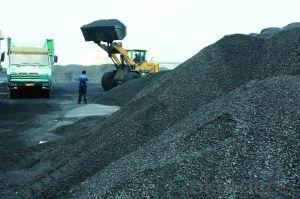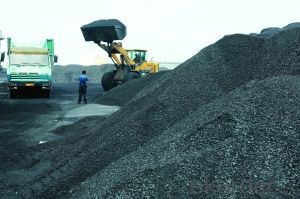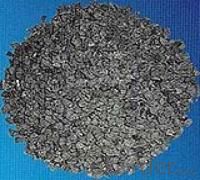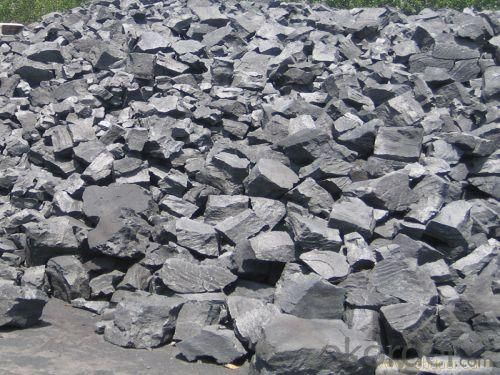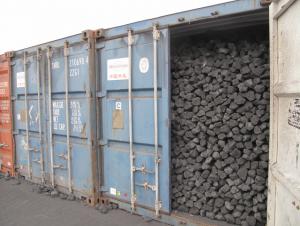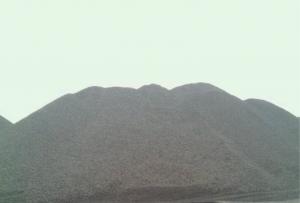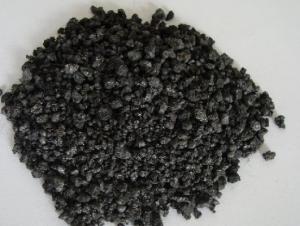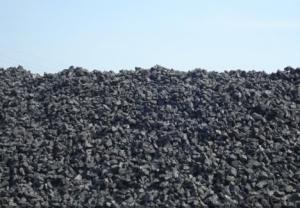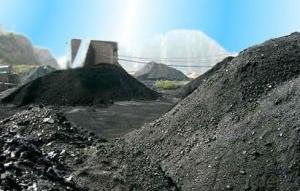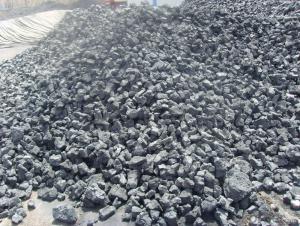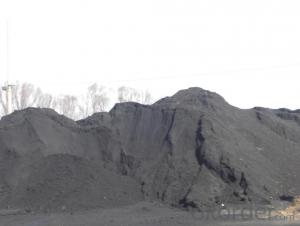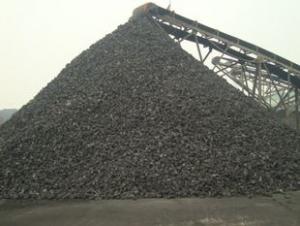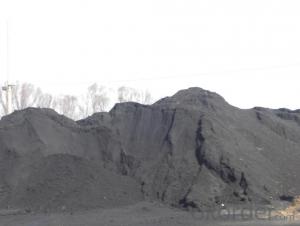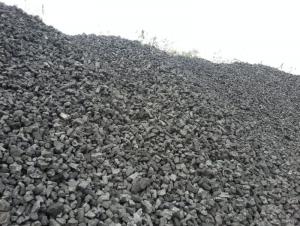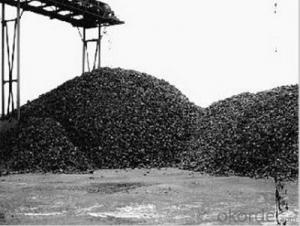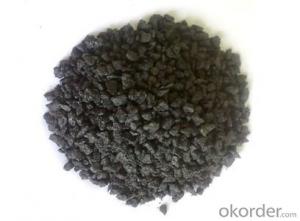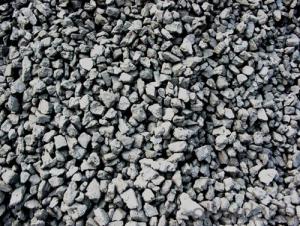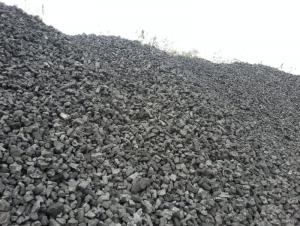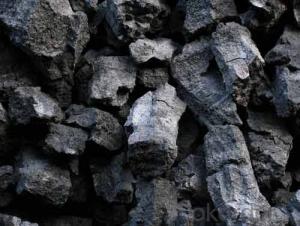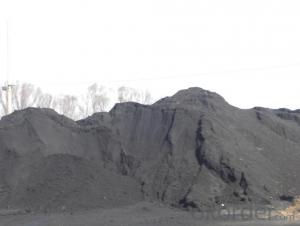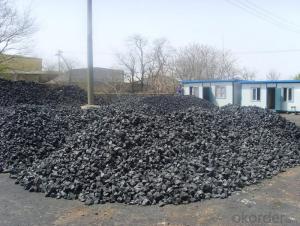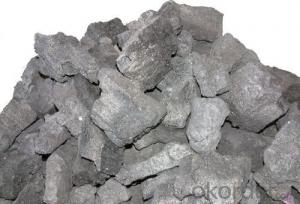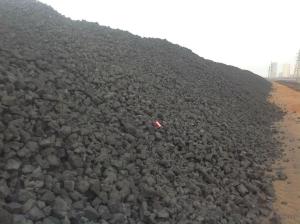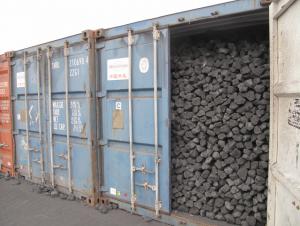the Nut Coke --- 20 to 50 mm
- Loading Port:
- Tianjin
- Payment Terms:
- TT OR LC
- Min Order Qty:
- 100 m.t.
- Supply Capability:
- 3000 m.t./month
OKorder Service Pledge
OKorder Financial Service
You Might Also Like
1. Structure of the Nut Coke --- 20 to 50 mm Description:
Coke is a hard texture, with carbon as the main component of irregular porous body, with cracks and defects in silver. The true density is 1.8 ~ 1.95 g/cm3, bulk density is 400 ~ 500 kg/m3, the porosity of 35% ~ 35%,.Coke all vertical and horizontal crack can be seen with the naked eye observation. The vertical and horizontal crack along the thick break, still is focal piece containing micro cracks.
Currently found in the earliest coke in our country, is in Guangdong new will be a unearthed in the ancient ruins in the late 13th century, during the southern song dynasty period in our country. Thus concluded that China's song dynasty, have been used to coke ironmaking. Guangdong new will find coke is also found that the earliest in the world. In Europe, the UK in 1788 began with coke ironmaking, this is the earliest record of western countries, the more than 500 years later than our country.
2. Main Features of the Nut Coke --- 20 to 50 mm:
• Quality assurance
• Mutual benefit
• Preferential price
• Various choice
3. the Nut Coke --- 20 to 50 mm Images:

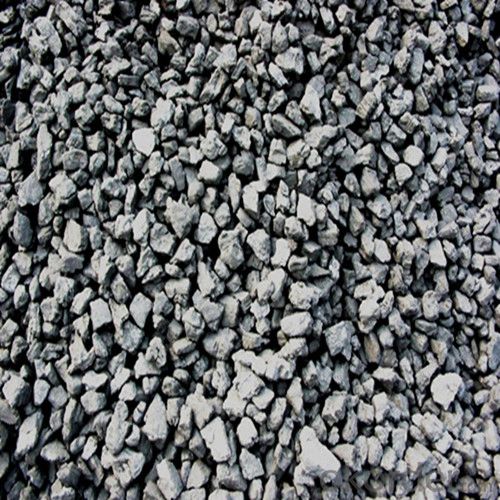

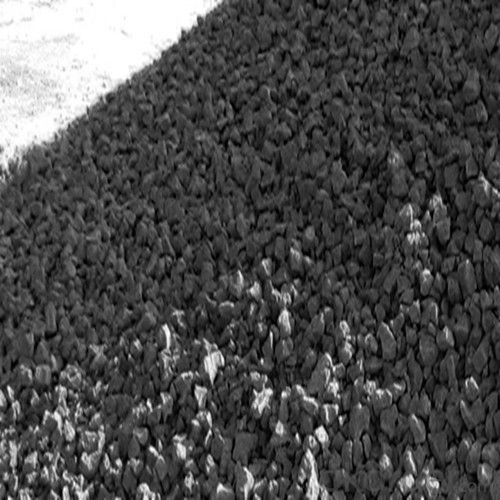
4. the Nut Coke --- 20 to 50 mm Specification:
Parameters | Guarantee | Rejection |
Total Moisture ( As received basis ) | 8% max | |
Ash ( dry basis ) | 12.5% max | > 13.5% |
Volatile Matter ( dry basis ) | 1.5% max | > 1.8% |
Sulphur ( dry basis ) | 0.70% max | > 0.80% |
Phosphorus ( dry basis ) | 0.035% max | > 0.045% |
Size 20-50 mm | 90% min | |
+50 mm | 5% max | > 8% |
-20 mm | 5% max | >8% |
5. FAQ
We have organized several common questions for our clients,may help you sincerely:
1)Main type
Metallurgical coke is blast furnace coke, coke, iron alloy and nonferrous metal smelting with coke. As more than 90% of the metallurgical coke for blast furnace ironmaking, so often called the blast furnace coke metallurgical coke.
Foundry coke is dedicated to cupola molten iron. Coke is the main fuel of cupola molten iron. Its role is hot metal melting furnace charge and overheating, support stock column maintain its good air permeability. As a result, coke blocks should have large, low reactivity, low porosity, with sufficient impact crushing strength, ash content and low sulfur content.
2) Application of coke
• Used for blast furnace ironmaking and used for copper, lead, zinc, titanium, antimony, mercury
• Other non-ferrous metal smelting of blast furnace,
• Reducing agent, compound
• The function of stock column frame.
3) The history of coke
Currently found in the earliest coke in our country, is in Guangdong new will be a unearthed in the ancient ruins in the late 13th century, during the southern song dynasty period in our country. Thus concluded that China's song dynasty, have been used to coke ironmaking. Guangdong new will find coke is also found that the earliest in the world. In Europe, the UK in 1788 began with coke ironmaking, this is the earliest record of western countries, the more than 500 years later than our country.
Although the use of coke earliest in our country, but has not seen through the records. Coking and the earliest recorded with coke can be found in the late Ming dynasty in China side to write the physical knowledge, he pointed out that coal everywhere all have, "smelly burning-out and closed into stone, chisel and charging again yue reef (coke), May 5, fire, cook Fried mine stone, will save Labour". This smelly coal, it is to point to contain volatiles more coking coal, the coal sealed burning-out, becomes hard coke, used for smelting, the effect is very good.
- Q: Coke is how to produce, what is its purpose?
- Coke is a color of deep gray to black solid, soft; internal structure of porous, and sometimes can be six square column.
- Q: Used in a restaurant?Dry or dry carbon carbon, coke or coke, and I do not know which word is a word of this sound. The use of coke for iron making. They are more than 1000 yuan price.The main problem is: dry carbon is coke?Toxic smoke, then the chimney can not do? Can I use the blower?
- Coke is bituminous coal in the absence of air is heated to 950-1050 DEG C, after drying, pyrolysis, melting, bonding, curing and contraction of the final stage of this process is made of coke, coking high temperature (high temperature carbonization). Coke obtained from high temperature coking for blast furnace smelting, casting and gasification. Coke oven gas produced in the process of coking and recovery is not only a high calorific value of fuel, but also an important industrial raw material for organic synthesis.
- Q: Coking coal, coke, coal, steam coal what is the difference?
- Coke is used for blast furnace ironmaking and iron ore in the steel furnace to play the role of the heating skeleton to support reducing agent
- Q: What is the difference between coking coal and coke
- Therefore, coke is not coking coal, coking coal is one of the products after processing
- Q: What is the amount of waste gas produced by a ton of coke burning
- The coking coal is heated to 1000 DEG C under the condition of isolated air (high temperature carbonization)
- Q: I now do a good job in the coke network editor, I would like to know more about coke
- Direct reduction in the blast furnace in the area above 850 degrees celsius. Because the CO2 generated at high temperature immediately reacts with the carbon in coke to form CO, it can be considered that the carbon in coke is directly involved in the reduction process:CO is used as reducing agent, either indirect or direct reduction. In order to continue to add CO, requires a certain degree of reactivity of coke.
- Q: What are the ingredients of coke
- Under the condition of isolated air, the bituminous coal is heated to 950-1050 DEG C, and finally, the coke is made by drying, pyrolysis, melting, bonding, solidification and shrinkage. Coke obtained from high temperature coking for blast furnace smelting, casting and gasification. Coke oven gas produced in the process of coking and recovery is not only a high calorific value of fuel, but also an important industrial raw material for organic synthesis.
- Q: What does the M40% and M25% mean in the analysis of coke?
- (1) crushing strength (shatter strength): the ability of a certain particle size coal sample to fall under the condition of free fall.
- Q: How many degrees of coke ignition temperature can ignite coke
- The average specific heat capacity is 0.808kj/ (KGK) (100 DEG C), 1.465kj/ (KGK) (1000 DEG C);The thermal conductivity is 2.64kj/ (MHK) (room temperature), 6.91kg/ (MHK) (900 DEG C);Ignition temperature (450-650) in air;
- Q: How to determine the maturity of coke or not?
- Ash in coke: the percentage of ash contained in metallurgical coke. The influence of coke ash on blast furnace smelting is very significant. Coke ash increased by 1%, coke consumption increased by 2 - 2.5%. Therefore, it is necessary to reduce the ash content of coke.The volatile content in coke: refers to the percentage of the total amount of volatiles in metallurgical coke. Coke maturity can be judged according to the volatile content of coke. If the volatile content is greater than 1.5%, it is said that coke; volatile less than 0.5 - 0.7%, it is said to burn; generally mature metallurgical coke volatile is divided into about 1%.
Send your message to us
the Nut Coke --- 20 to 50 mm
- Loading Port:
- Tianjin
- Payment Terms:
- TT OR LC
- Min Order Qty:
- 100 m.t.
- Supply Capability:
- 3000 m.t./month
OKorder Service Pledge
OKorder Financial Service
Similar products
Hot products
Hot Searches
Related keywords
